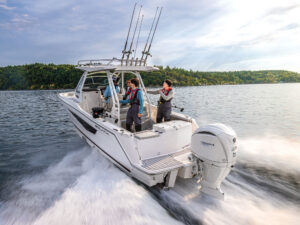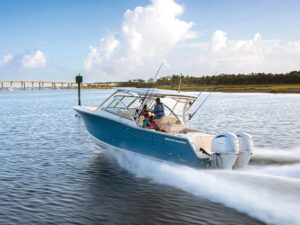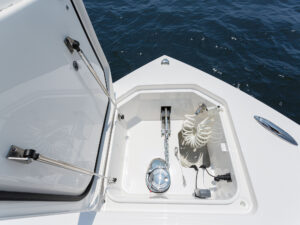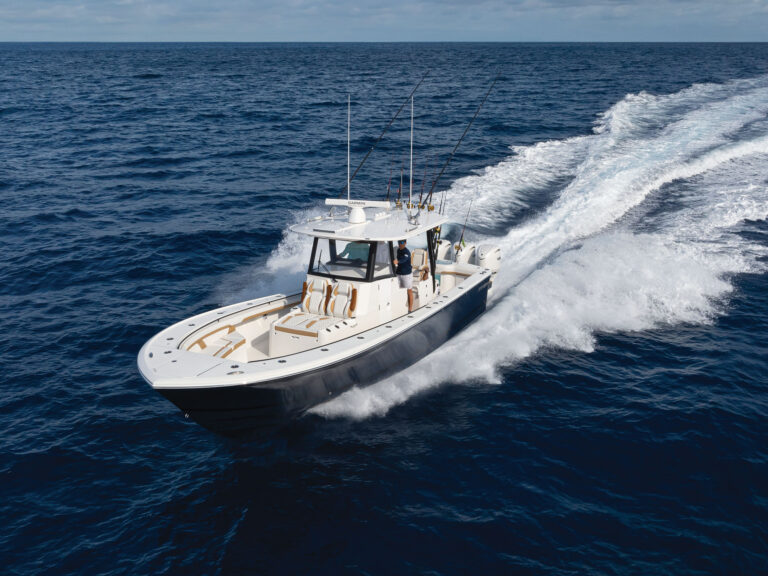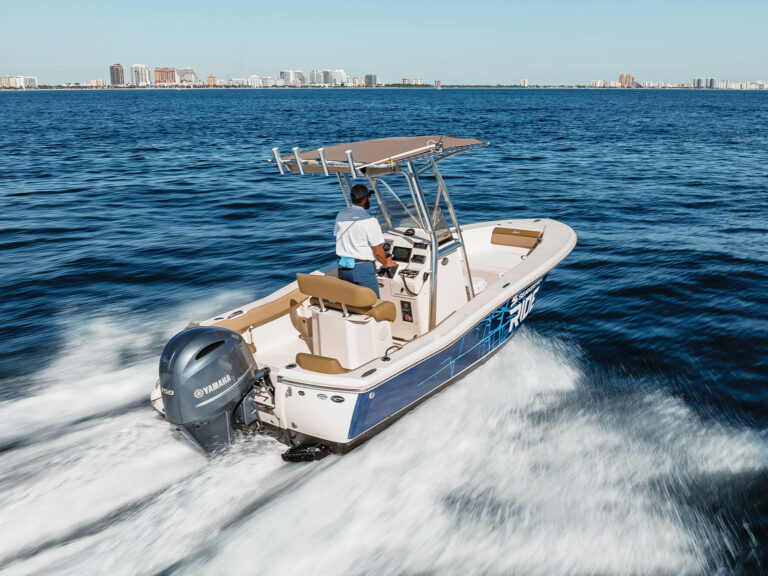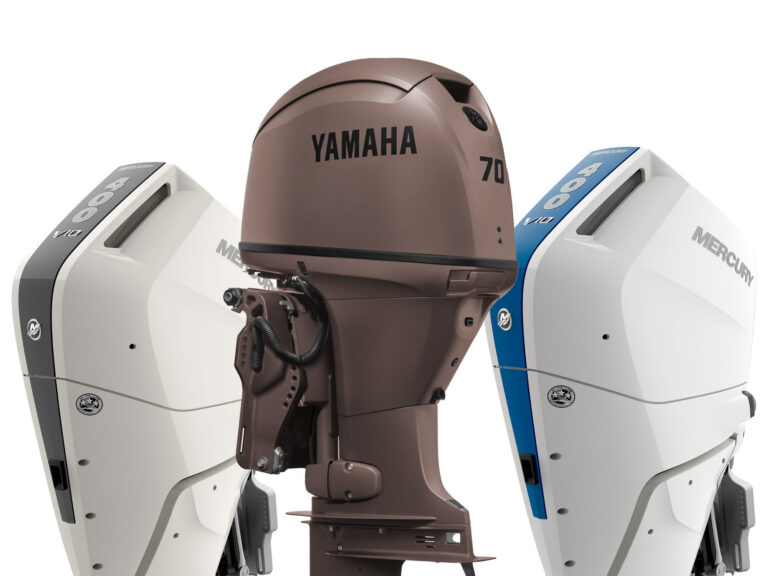
Soft-plastic lures, in all their sizes, shapes, colors and styles, can be almost as effective as natural baits. Built-in scent and a variety of configurations — shrimp and fish imitations, eels and shad-style bodies with different tail shapes for lifelike action — can be deadly over a wide range of water types and fishing situations. Tuna on the continental shelf, stripers on the jetties, snook and tarpon in the inlets, and redfish and trout on the flats — there is scarcely a situation not to use soft plastic lures in saltwater.
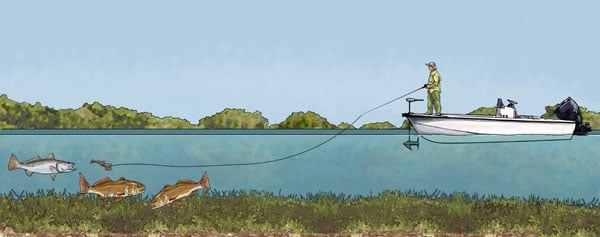
How to Rig Soft Plastic Lures
Soft plastics are especially effective for flats fishing, sight-casting and surf fishing because they land quietly. They can also be used right on the surface when rigged weightless. A plastic shrimp is ideal for this when the internal weight is removed and the hook positioned so that it sticks out at the bottom, keeping the body upright. So is a 4- to 8-inch slender plastic body rigged weedless on a large-gap hook, a deadly rig for fishing shorelines and structure. A soft-plastic rigged with a jig head does add noise and weight to the soft bait.
Many anglers sight-fishing on grassy flats remove the internal hook from a plastic shrimp and rig it without the tail fin to swim backward on a larger hook. The point lies right along the back so the lure is almost completely weedless, and it casts much easier and more accurately when rigged this way. Trim back the shrimp with a scissors if a particular fin continues to catch grass.
One or two plastic beads in front of the hook eye can increase the strike potential of almost all soft-plastic rigs. Everyone has their own color favorites; mine include orange, red, chartreuse and black, and I prefer 6 to 8 mm beads. A bead inside the loop formed by the leader when you’re tying it to the eye of the hook prevents shrimp bodies and other soft plastics from sliding up the leader after hookup and becoming a target for other fish.
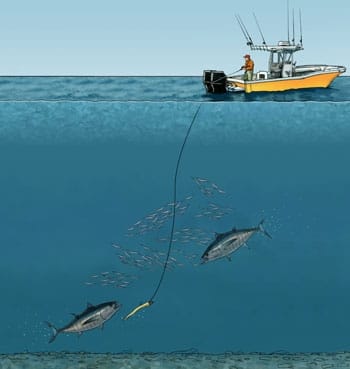
How to Fish with Soft Plastics in Deep Water
Over the years, I have successfully fished as deep as 150 feet with soft plastics in saltwater. Getting down to where the fish are is a matter of weight and overall shape, especially when you’re trying to reach a deep reef or wreck. If there is current or the boat is drifting with the wind, it takes more weight to get down quickly.
The most effective designs for this are streamlined: Usually the choice for deep work is an arrow-shaped jig-type head with a slender cylindrical body up to 14 inches long, such as the RonZ 4X series. Some baits have a twisted tail to provide swimming action, which often gets more strikes, especially in colder water.
The basic technique is simple. Drop the lure over the side or cast it a short distance, and let it sink with the bail open or in free-spool. As soon as it reaches the desired depth, immediately start retrieving it with lots of rod-tip action, shifting from short, quick upward sweeps to longer, somewhat slower lifts. Vary the retrieve rate until you find the right combination. If you are not getting as deep as you need as fast as you feel you should, increase the weight of the head.
On a calm day with no current, you might get to over 100 feet with a 2-ounce lead head. Other times you may need 3 ounces or more. For maximum weight, add egg sinkers to the leader above the jig head.
I have caught dorado and tuna on the surface by always having a second rod rigged with a slow-sinking softy suitable for quick casting. And very often, just drifting and slowly jigging a soft plastic with little or no weight behind the boat is exactly what’s needed for fish cruising or feeding at mid-depth levels, especially when you’re chumming or chunking. Keep in mind that offshore fish range from big to extremely big and are therefore strong, so use heavy-wire hooks like those offered by Hogy.
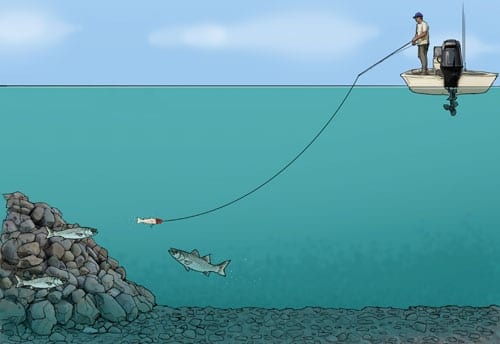
How to Fish Soft Plastics in Inshore Waters
There’s no true secrets when it comes to soft plastics for saltwater. Use the same logic you’d follow if rigging live baits for fishing. Depths from five to 25 feet require less weight for a lure to reach bottom. This is an environment where shrimp and swimming baitfish imitations, like the D.O.A. B.F.L. (which looks like a mullet), are especially effective. And of course, a jig head with a soft body attached is always effective.
One of my favorite inshore rigs uses a shank-weighted large-gap hook to make the plastic sink and swim more naturally in a horizontal position. This system works best for depths down to 20 or more feet if the current is not too swift. The lure can also be made to swim right at the surface. In many situations, a bait that sinks slowly can be fished with a slower retrieve that gets more strikes.
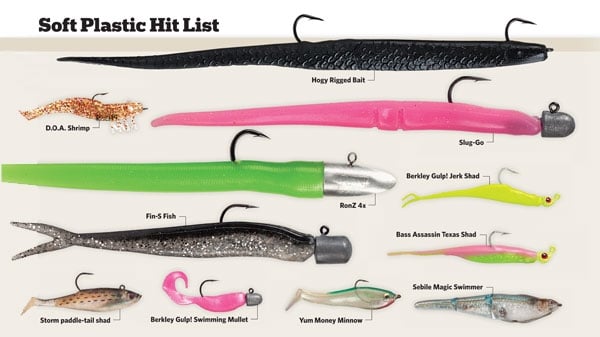
The venerable soft-plastic shrimp has undergone continual improvement over the years. Since shrimp come in endless colors and sizes, science has yet to identify a game fish that won’t eat them. Most shrimp lures are prerigged, with the hook sticking out the back. A weight in the belly provides balance for a slow retrieve or natural drift with an occasional twitch along the bottom or over the top of grass beds. For deeper water it is sometimes necessary to add weight to the leader in front of the hook, creating a so-called Carolina rig. It is also possible to peg the sinker a foot or two up the leader, which allows the weightless shrimp to swim slightly above the bottom in a natural manner.
On your next fishing trip, consider some of the soft-plastic rigs and tactics outlined here for inshore and offshore success.

